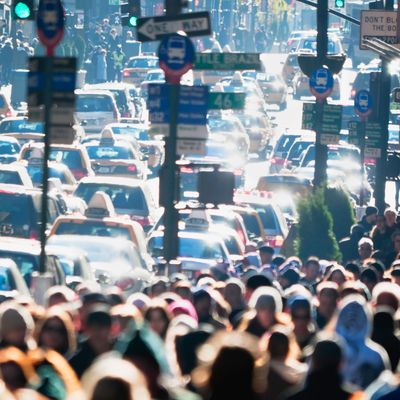
Here is a fun statistic for you: Nine out of ten (!) adults living in New York City are exposed to noisiness at levels that would be considered unsafe by the EPA. There are actions to take when the racket becomes too much to bear, of course, like complaining to 311 or trying to drown out the sound with noise-canceling headphones or state-of-the-art earplugs.
Scientists at New York University and Ohio State University have a longer-term idea. As the New York Times reports this week, researchers from those universities are setting up about 100 sensors across the city that will monitor noise levels. The sensors “will be mounted on the second floor of public buildings,” initially around Washington Square Park and, later, throughout Manhattan and Brooklyn. More on those sensors — which, interestingly, were first developed to record and identify the calls of migratory birds — according to the Times:
Snippets of audio, about 10 seconds each, will be collected during random intervals over the course of about a year to capture seasonal notes, like air-conditioners and snowplows. The cacophony will be labeled and categorized using a machine-listening engine called UrbanEars. The sensors will eventually be smart enough to identify hundreds of sonic irritants reverberating across the city.
The sensors, by the way, will not (and, more to the point, cannot) record conversations among people, the researchers say; jackhammers and honking horns are more their purview. The five-year project, funded mostly through a $4.6 million grant from the National Science Foundation, is called Sounds of New York City, or Sonyc, and the researchers hope their work will serve to both pinpoint the louder spots and track whether noise ordinances actually work.
Incidentally, the Times notes that several groups already exist that seek to tamp down noisiness around the city, including the Noise Abatement Commission, Citizens for a Quieter City, and the wonderfully named Society for the Suppression of Unnecessary Noise. It will be well worth keeping an eye on the findings of Sonyc; in the meantime, however, I think I’ve found myself a few new clubs to join.

